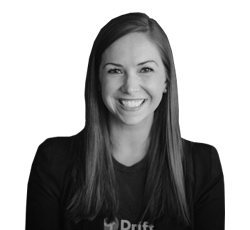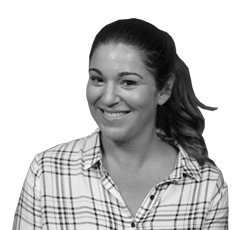Episode Summary
Today we’re featuring Pedro Magriço. Pedro was previously the Director of Product Growth at Typeform. In this episode, Pedro shares what he learned working at Typeform over the last 5 years.
Mentioned Resources
Transcription
Andrew:
Hey, Pedro. Welcome to the show. It's great to have you today. How you doing?
Pedro:
Hey, great. Thank you, Andrew. Thanks for having me.
Andrew:
Yeah. It's a pleasure. I think the two of us, we've chatted for quite a while now. We've had a few calls, the topic of churn does come up from time to time. Maybe you can just tell the listeners a little bit about where you're at, your role.
Pedro:
Yeah. So, right now, I'm no longer at Typeform, actually. I very recently joined another company.
Pedro:
At Typeform, I was there until November of last year. I was there for five years. I was head of growth. So, growth was a division of product. So, product had three main divisions and growth was one of them. We were three squads. The first squad, they did acquisition. The second did activation. The third did conversions and revenue.
Andrew:
Okay. So, you've actually been at Typeform for quite a while. You must have seen it, everything from beginning to end. Not at the moment. We once chatted, as well, that in terms of the focus towards Typeform and churn, would you say that Typeform typically focuses on churn or …
Pedro:
Truth to be told, we didn't work on churn directly. I don't mean that we didn't look at churn. We did look at it, of course. What I mean is that we didn't focus much on trying to fix it by targeting existing customers who go inactive. We did try a few things with templates and recommending more use cases and notifications, but with very little success. If you want, we can talk more about those things.
Andrew:
Cool. So, where did you focus in? What was your main KPI as the head of growth?
Pedro:
We were more focused on new business, new customer growths. Of course, and that's how the team was structured. So, one squat working on acquisition and that was much around the morality of the product because Typeform is inherently viral.
Pedro:
The activation, of course, you're viral, but that also means you get a ton of crappy traffic, so how can you have a great first user experience, show them this is a great product and then revenue. So, pricing by far has been the biggest growth lever that in my experience that Typeform been the biggest growth lever, for sure.
Pedro:
I actually also helped with reducing churn.
Andrew:
Okay. How so?
Pedro:
So, yeah. So, I think maybe the biggest thing we saw when it comes to improving churn was when we introduced PRO+. So, Typeform's first plan and the most popular is the PRO plan. That's how we launched the paid plans. This was back in 2014.
Pedro:
Then, in 2016, we launched this PRO+ plan. It's double the price and it has a few more features and it was pretty limited in functionality, actually, when we launched. However, what would happen is that our best customers, and these people are your fans. They love your brand. They love your product and they're willing to pay you more. So, you get something out and they naturally spending more than everyone else.
Pedro:
So, what that means is that your revenue now, the revenue they generate is a bigger chunk of your total revenue. Because they are higher quality, you have higher quality revenue. Therefore, your overall churn goes down. So, that's pretty straightforward and we did see that.
Andrew:
Interesting. So, you have the definition of best customers. How do you go about defining what best customer is for Typeform as is?
Pedro:
So, we looked at a variety of metrics like we do have like, okay, best customer needs to do this and this and this, but we have a definition which was sticky as well. It was actually straightforward, the stickies. These were people that paid for consecutive 12-month periods, so literally they never churned. They accounted for more than half of our revenue. That percentage went up when we launched PRO+. We also looked at time to conversion and first month churn.
Pedro:
So, these metrics, like there was a segment there that was very different from the majority of our customers. The thing with that, the majority of our customers were using Typeform for surveys. Surveys is a one-off use case, like the vast majority of survey use cases. So, you launch a survey, you get the data and you're done. You don't need the product anymore.
Andrew:
Move onto the next project, yeah.
Pedro:
Exactly. So, our best customers also had more evergreen use cases like the use case that I remember was most correlated to retention was contact forms, movement forms, or payment collection forms are also very strong. Of course, these are much more … It requires more effort to set up so, of course, you're more committed to the product when we use it for those use cases.
Andrew:
Yeah. You mentioned this as well, actually, that integration's been one. I think that's definitely one big use case where integrations makes the product a little bit more sticky if people are relying on you for their contact form on their site or their app. It's not something that they want to lose quite easily.
Pedro:
Exactly. Yeah, that was a big focus for us, end of last year. If you go to Typeform now, you'll see a lot about Typeform Connect, so this is making a more connected Typeform. It's just playing the rules of the game today.
Pedro:
So, there's a ton of SaaS apps and tools out there and everyone becoming more specialized and more integrated. If you have customers come in and they already using their tools, you need to integrate with those tools. When they do, it's great for you, too, because you more easily get more customers, but those customers, they also spend some time to set up their workflows. So, they have these workflows getting data from one place to another. So, switching away is more costly because you need to set it up all over again.
Andrew:
Yeah. Definitely. So, what sort of got you on the track of the workflows? How did you figure out that you needed to move in the direction of integrations and start introducing-
Pedro:
Yeah. You know Zapier, right? You know, they've kind of pioneered the idea that you can connect apps together.
Andrew:
Yeah.
Pedro:
It was such an easy thing for us to do is okay, we knew integration was a thing, even when we launched and Zapier made it super easy for us to offer integrations to our customers. Then, looking at the data. Zapier doesn't share the data much, but from what we could see is that people who integrated with Zapier, they churned a lot less. They churned quite a lot less.
Pedro:
So, we figured also that the job to be done really for the customer that's using Typeform, it's not the form itself, like you're after collecting the data to use it somehow, for something. Integrations then, if you look at them from that angle, that it's about the data. It's just they become more and more important because they're not going to use Typeform for sophisticated data analysis or we're not a CRM tool, but we collect leads.
Pedro:
So, and acting on and following up on those leads with your CRM tool, it's what it's about. It just became clearer to us, both from the metrics and also from where we stand as a product and the value we can deliver that integrations was important for us.
Andrew:
Yeah. Absolutely. It's like getting more embedded, embedded into the workflow. The one thing, though, that's always interesting is typically with integrations, you tend to see a dip in engagement within your own app. Is this something that you looked into? The dip can obviously come as a better fit to the user because they're getting more out of the tool, but was this something that you looked at when you started working on integrations?
Pedro:
What do you mean? How so?
Andrew:
So, less time. People always spend less time in your app and more time in others.
Pedro:
Yes. We did see that, absolutely, and free to have an idea. Even in the beginning, at some point, we were looking at our results tab. Okay. Results, what would you do with them? It looks like this needs some love and that kind of Friday afternoon talk, right?
Andrew:
Yeah.
Pedro:
So, when we start looking at the data and then we saw that actually people, 80% of them spend seconds in that results tab. Why? Because they were just downloading the data and get the data somewhere else. It was already awful.
Pedro:
So, the more integrations we have now and they're connecting to those sheets, they're not even bother going to that tab. So, we definitely saw … I mean, it was already there, but we definitely saw people spending a little bit less time in our app.
Pedro:
However, in contrast, they do spend more time setting it up, so you have to really do the onboarding well and show them, hey, you know, this workflow will save you time later on. It's just everything becomes automated and it will be much easier for you down the road if you do this now.
Andrew:
Sure. That's interesting, as well. Like you say, people spending seconds within your app and you came to that conclusion. You can definitely see it with the product with Typeform being in the conversational product it is.
Andrew:
I was always fascinated as well by the finished product of Typeform. I think it's something that they take a lot of pride in the actual work, as well. I know you had a project, as well, where you launched Typeform 2.0. It'd be interesting how you went about that. Was any of that driven by looking forward to increasing retention or to increase engagements with your business?
Pedro:
That was mostly first time and experience. In that, it's the product creation, making the creation process, removing friction from that.
Pedro:
So, I don't know if you remember the old flow, but every time you had to add a question, there was these preview that popped up. Then, you wrote your question and saved. Then, you had a screen popping on and off. What we did was, "Hey, now let's put everything in the same flow." As you add your questions, you can preview them in real time. Also, you can just type to build your form and, of course, this also helps us live up to our name of Typeform. You just type your way and your questions and the form just gets done. You can preview it all in real time, in one screen. Then, when you're done, you just share it.
Andrew:
Putting it wow experience.
Pedro:
That was quite of a … Because it wasn't just that in front an experience. It was also in the back end, we did a lot of refactoring. We killed services, started new ones. That project took more than a year of the whole company focused on that.
Andrew:
What was the outcome and what did you see that you towards your activation and your retention?
Pedro:
At the beginning, we saw some active users quite annoyed because the switching cost is always tricky. We tried to mitigate it as much as we could. It's hard because you worked on that thing for so long. Then, you see these people going, "Oh, god!"
Pedro:
But then, slowly, we start to seeing that people were liking the experience and the new brand. We also took the chance to redesign the brand a little bit and how we communicated. It just, the UI became fresher and the product became a lot faster and just those performance improvements alone and the added benefits of the experience, we saw people more engaged. We didn't hard tested it so we didn't see, okay, this was the next percent increase in whatever, but qualitatively, we did see people happier.
Andrew:
And qualitative, how did you go about figuring that out?
Pedro:
Well, MPS and social media. So, we used to track MPS quite a lot. Customer success held this customer voice meeting every month where they would walk us through this core and how we broke that down and how it changed per the product changes we did.
Andrew:
earlier you mentioned, as well, like Typeform is a freemium product. In nature, it's very viral as well, but you tend to get quite a lot of junk traffic as well. Then, you touched a little bit on the jobs to be done.
Andrew:
So, a survey being a single-use case a lot of the time, with jobs to be done at Typeform like maybe you want to walk us through what it is, how you use it to influence the work and experiments that you run.
Pedro:
Yeah. It was a thought exercise. It's a framework that helped us abstract away from features and micro functionalities that we feel the product should have and just help us think about, "Okay, what is exactly that the user is wanting to do?"
Pedro:
So, we had a uWorks team that they used jobs to be run to form and formulate the questions they would ask in customer interviews and every part of [inaudible 00:22:12] was in products.
Pedro:
So, it was just a helpful way for us to think about how we develop our product in what direction. That had implications, for example, in the kinds of templates we would build and, of course, you've mentioned the surveys versus sticky use cases, but then, within the sticky use cases, there's a variety of different jobs that we saw people were after. Collecting leads was the biggest one. There was also collecting payments.
Pedro:
Then, we had this eureka moment where Typeform can help you throughout the different stages of your customer journey. So, you're researching the markets. You run surveys. You want to have a product. You want people to sign up for that product. So, lead generation comes into that. People are paying for that product so payment collection. This helps us also formulate our marketing campaigns. So, yeah. That was how we used jobs to be done.
Andrew:
Interesting. So, then like Typeforms they throughout the user journey.
Andrew:
With regarding marketing campaigns, specifically then, say, hitting up the growth team and you mentioned acquisition being one of them, how much of that as well was looking at sort of the type of leads coming through and what did you do in terms of acquisition to try and improve the deed quality coming through?
Pedro:
Sure. So, we had this trail of, where, "Okay, do we ask people what they're here for and try to collect a lot of data from them?" But then, every time we did that, we saw activations rates tank just a little bit and our marketing falls and data people would be very happy. We did learn more about our customers so we kept those things on for a while. Then, we eventually wanted to simplify the onboarding and we killed them. We went back and forth in that process.
Pedro:
I think that was okay in that once you see a pattern like it's not going to change in six months. Maybe you want to introduce that segmentation flow even having your onboarding later on, but to check if the same insights you got are still valid. That's fine, but we were just focused on getting people in and focus on getting people, like talk to them in the common things that they wanted all to do.
Pedro:
So, you want to build a Typeform no matter your use case. No matter your use case, you need to add a question. No matter your use case, you will probably want to preview your form and then test it by sending yourself a data response.
Pedro:
So, it was more about, in product growth, doing those kind of things then really segmenting and trying different flows because we also saw that and the first thing that we started doing in that when we pursued that avenue of work was that it was very complex in terms of keeping track of the different flows you have in the product. You end up shooting yourself in the foot because you miss some things that make sense in that flow, but don't make sense in any other flow, and A/B testing results, so you never know if you have to retest them twice in both flows. It was just too chaotic and you get diminishing return at some point.
Pedro:
So, what we did find that was more relevant was emails and marketing so how we collect the data and using services like Clearbit. Then, we deliver that data to marketing and then we try to be more segmented with our emails.
Andrew:
Okay. So, instead of actually in that put was more in terms of notifications and making that more segmented to the use cases through the notifications they received. I do see your point as well. A lot's like the diminishing returns in terms of how complicated flows can get when you try and segment and become too granular.
Pedro:
Yeah. We did see that as well, but still, because we had a decent infrastructure for emailing, it was more manageable than products, than doing it inside the product. Yeah.
Pedro:
There's clever things you can do. For example, one of our most successful emails was referencing the name of the Typeform you were working on. Then, showing you related use cases in building some very simple logic. That is something you can automate fairly easily.
Andrew:
How did that work specifically?
Pedro:
I don't recall the exact numbers, but it was probably double-digit increases in activation from those emails compared to the old version.
Andrew:
All right. So, this always an interesting one as well. It's like the crossover between marketing and product specifically in this growth, the product marketing roles. How closely did you collaborate on projects like this where it came to the experience of that early acquisition onboarding, partly an app and then partly notifications. What was the collaboration like between the teams?
Pedro:
Yeah. We would focus more on building the tools for marketing to use to get a job done. So, that's what we focused on, not so much of doing the job for them. So, typical example is a landing page. We wouldn't build landing pages. We would build more the tools for them to build a landing pages, so that you do it once. Then, next time they have the need so we can just run it, run by themselves. This was how we collaborated the most.
Pedro:
We also helped them quite a lot in terms of attribution and building the data infrastructure to allow emails and enable our marketing stack to work so things like segments and tracking events, sending them to Facebook and AdWords, so they have all the data in there, so they can be more sophisticated with the targeting, the remarketing list. So, building all of the infrastructure, that's what we focused on.
Pedro:
Then, in parallel, we focused on the things that were product-driven, like the onboarding, the pricing and referrals and virality, all that good stuff.
Andrew:
Yeah. Pricing, you touched on in the beginning. I want to dive into a little bit more is you mentioned introducing higher plans, like you definitely saw that increase in revenue and the more engaged customers. How did you go about determining those price increases? How did you know what the level was you wanted to start at? What is your process behind that?
Pedro:
Yeah. I mean, we didn't have a formal process. I guess, if you want to put it on paper, it would be just research, tests, measure, and iterate, but …
Andrew:
In terms of research, what sort of research did you do when it came to making these pricing changes?
Pedro:
Yeah. So, we worked with, I think you mention you've worked with them as well and at Hotjar, but we worked with price intelligently. So, they have a few server methodologies that enable you to determine price elasticity and your willingness to pay, the most valuable features you have versus the not so valuable, usage-based metrics, like should you charge based on the number of responses or number of questions that you add to a form? Things like that.
Pedro:
So, yeah. We worked with them. We had a data team that did a lot of analysis on how our customers behave and respond to different pricing changes. We moved features across plans. That's something we did quite a lot. We A/B tested the changes. We also actually A/B tested different prices. This is something people get nervous about.
Andrew:
Absolutely.
Pedro:
But, we did it and it can be done. It was like there was no big fuss about it. The key there is to only test with new users and grandfather existing users if you do increase prices. Yeah, we tested different price points and we're able to map our willingness-to-pay curve or price elasticity curve. That was very, very, very cool. Yeah. We did a variety of things, for sure. Then, we just tested them and see what worked.
Andrew:
This research, these surveys, what audience do you send this out to? How do you decide who should be surveyed to understand the willingness to pay or the price elasticity?
Pedro:
Everyone. Everyone really [crosstalk 00:33:23].
Andrew:
Everyone who's a Typeform user?
Pedro:
Everyone who's a Typeform user. Then, you segment the data when you have it back. Yeah. You want to get as much data as possible because if you segment who you're serving beforehand, you don't know that maybe you're missing out on some valuable insights you get from the segment that you didn't survey.
Andrew:
I'll dive into a little bit more, because it is interesting and I definitely get the feeling like people get very nervous with A/B testing pricing.
Andrew:
In an episode with Janna Bastow from ProdPad, we discussed this where ProdPad, what they actually did was test pricing on the pricing page, but then actually have the old prices in the app. So, users would come and see. That led them to be able to test the conversion rate data. What you're saying is something a little step further is actually A/B testing two different prices.
Andrew:
How did that actually work in actuality? Would you set up two pricing pages and then have the experiences and the flow set up throughout that experience? How did you prevent customers from seeing the two different prices because I'm sure you have them in docs and you have them in different places throughout the app as well, or wasn't that a concern?
Pedro:
Yeah. Very good question. So, the flows, the pricing page, everything was exactly the same thing, in our case. What we did was when we first saw the user, we assign them to a price variant. Then, using code keys, we made sure that and if the user is logged in and using the product, we show the price that they saw in the beginning. That's straightforward, but if they went to the website, which is use cookies, and we didn't care about people going to [inaudible 00:35:29] and checking prices there because that's just a fraction of the traffic we would miss.
Pedro:
To be honest, we didn't have people emailing us, "Hey! I'm seeing different prices." We also didn't care about the help centers. So, we still kept the help center with a control prices. Whatever we could, though, we moved the exact figure of the price, so we would put a link. "Hey! Check out our pricing in our pricing page."
Andrew:
Oh. That's much [crosstalk 00:36:07].
Pedro:
We actually directed people inside the product to check the pricing page inside the product. So, it's just little things like this really helping mitigate those problems.
Pedro:
Then, when filtering the data and analyzing the data, you can filter out all of those users that have been in those properties that you're not 100% sure that you've controlled the price. Then, in that way, you can really guarantee that you have a solid and safe analysis.
Andrew:
Okay. Then, when you test now, what sort of audience size are you looking for? How long are you running these experiments? Then, how do you track them going forward as well? What is the time frame?
Pedro:
Yeah. You can put the numbers down in a statistical significance calculator and see how much time you would need. For a test like this, I think we spent about a month and a half. We're able to see to get statistical significance of 95% for conversions for sure across all price points. First one turned. We didn't get to 95, but we did get enough data to see a pattern there. So, yeah. It's not great. A month and a half, it's a long time, but it can really change your business.
Pedro:
The reason why we prioritize this test in the first place was because, previously, a long time ago, we increased our prices and actually, at that time, we didn't test them. We just increased them. We have increased them by 40%. We didn't see conversions go down. So, if it worked once, it could work again, right?
Andrew:
Yeah. Absolutely. Yeah. Then, so that experiments because then [inaudible 00:38:18] was, that experiment was a success or did you actually experiment more than once with the prices with an A/B test?
Pedro:
That experiment, that test was inconclusive. So, the higher price points, we got more revenue, but less customers. The higher price points didn't compensate for the loss in customers.
Pedro:
We only tested more expensive prices. Looking back, that was a mistake. We should have tested lower prices as well, but yeah. So, we kept the control because we wanted to value, to favor more customers and because they get active. There is morality kicks in and so on and so forth, but nonetheless it was good to see that we had our price was optimal.
Pedro:
Then, also you get a lot of insights from the segmentation. So, we were able to see that customers with more responses were much less sensitive to price so overall, your test might be inconclusive, but when you compare segments, we did see some positives there, so some statistical significant difference there.
Andrew:
Nice. Then, what do you do if like with the test is invalid? What do you do with the users that are actually going through that test, by that when you make that decision, is there transition made or are they on the pot indefinitely on those prices?
Pedro:
Yeah.
Andrew:
How do you manage?
Pedro:
We had a whole plan for that. So, because it was inconclusive, it was fairly easy. People in the control stayed in control. We didn't have to tweak it with them. People that we billed the higher prices, we could have just let them be there, but we figured it wouldn't be there, and also you added some tech bets. So, we just emailed them, said, "Hey. You know, we're, you know, decreasing your bill to $35 and, you know, happy days!"
Andrew:
Yeah. I guess that's an easy one. Then, on the flip side, like you said, just grandfathering, making sure that existing customers get their rates and supply some new customers, keeping it simple and easy.
Pedro:
Yeah. That's simple.
Andrew:
So, you tested a lot, then, with price points. You did your research. Was anything else that you did around pricing that had an impact?
Pedro:
Yeah. We moved features across plans as well, so that was big as well. We were able to see the features that converted the best, the ones that were more related to stickiness, but had less adoptions. So, we moved the features that were in the higher plans to lower plans and features that were in lower plans to higher plans. So, we just tweaked the packaging there a little bit.
Pedro:
We also start testing, introducing limits in usage in the free plan. It was, we had a fairly generous unlimited plan. We had this idea that A, the free plan needs, it's really generating a lot of virality and it's fueling our growth. It was for a long time.
Pedro:
But then, if you can eke out 10% increase in conversion rate, no, it didn't matter how much more virality those free customers would get us. That 10% win more than compensated for the loss in virality. Even though, in the long term, you're never really, really sure because you're also converting people that would have rather stayed on free, so your retention will tank a little bit, will take a hit. So, you're always walking in this … You'll find a win somewhere, but you lose somewhere else.
Andrew:
Yeah. The moving features around quite a bit. How did you go about it? Is this something that you had built in-house to easily be able to experiment with pricing packages or were you using a third-party tool to be able to do this?
Pedro:
No. We did it in-house as well. You mean the actual changes?
Andrew:
Yeah, so I mean being able to create new packages because, essentially, that's if you're moving features around you, updating packages and you changing them all the time. Was there something that done in-house or using sort of a subscription management tool?
Pedro:
Yes. No, no. We didn't have [inaudible 00:43:19] or anything like that. We just had Stripe. We effectively don't need to … You shouldn't need to change your subscription system because what you're charging is the same. You're not changing your prices. You don't even need to change the names of the plan and what goes on the invoices. What you change is what you offer under that plan. So, it's just a feature flag in the database and users is sent to false or true in the back end and that's it. We have it a fairly and good [inaudible 00:44:05] to do that.
Pedro:
Now, creating new plans and that was something we were starting to work on by the time I left, and charging for add-ons and creating new packages on top of your existing plan, that's a whole avenue of pricing that I wish I had the chance to do more, because … Also, in the way it comes to churn, expanding your existing customers is a great lever to reduce your net, M.R., and churn rate.
Andrew:
Absolutely and on that as well, [inaudible 00:44:42] in terms of pricing and yearly plans like locking people into longer subscriptions, what did you do around that?
Pedro:
Yeah. So, a lot of companies do this by default, switches, showing by default the yearly prices in their monthly equivalent. We weren't so sure, at some point, that this was working for us, because again, Typeform, it's a nature that you frequently, infrequently used. So, we put that to the test, but it did actually work. So, it was a double digit increase in the number of customers and the percentage of customers that go straight to a yearly plan. So, that was a great big worry as well.
Andrew:
It must have had a huge impact as well on churn itself, keep locking people into 12 months.
Pedro:
Exactly, yes. Absolutely.
Andrew:
Yeah, well thanks very much Pedro for sharing today I think you’ve left us a lot to think about after this and it really has been a pleasure having you on the show. I wish you best of luck going forward now on your new adventure and looking forward to hearing how it goes and where you take your career from here.
Pedro:
It's been great. Thanks for having me.
Andrew:
Yeah. Thank you. Yeah. Let's keep in touch.
Andrew: Cool. Have a good day, Pedro. Cheers.
Pedro:
Thanks. Cheers. Bye-bye.
Comments


Pedro Magriço

A new episode every week
We’ll send you one episode every Wednesday from a subscription economy pro with insights to help you grow.
About
The show

My name is Andrew Michael and I started CHURN.FM, as I was tired of hearing stories about some magical silver bullet that solved churn for company X.
In this podcast, you will hear from founders and subscription economy pros working in product, marketing, customer success, support, and operations roles across different stages of company growth, who are taking a systematic approach to increase retention and engagement within their organizations.






































































































































































































